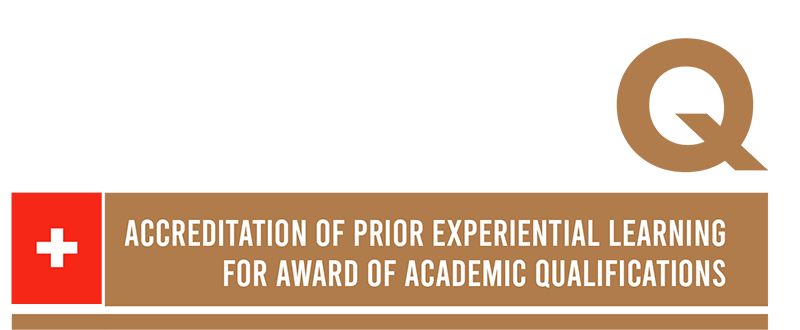Making APEL.Q more accessible for Roma women’s social inclusion
Background
According to estimations from NGOs, there are almost 2 million Roma in Romania, making up about 10 per cent of the country’s total population. Roma people face marginalization and live in extreme and poor socio-economic conditions. 52 per cent of them left school before the age of 16 (European Union Agency for Fundamental Rights, 2012).
This case study covers projects on the implementation of validation of non-formal and informal learning of Roma people in Romania. It highlights how validation can become more accessible and inclusive, particularly for Roma women.
The ROM-ACT project comprised five European countries (Romania, Spain, Greece, the Czech Republic and Ireland) and was co-financed by the lifelong learning programme GRUNDTVIG. It identified the validation of non-formal and informal learning as a means to tackle social exclusion of Romani women and to increase their access to non-formal and informal validation systems. The focus was on three main target groups: Roma women, civil organizations, and policy makers and public administration. In recent years, two other projects also targeted Roma inclusion in Romania. The project entitled ‘LEGAL 2 – European investment in the Roma future in Romania’ focussed on validating prior knowledge of Roma affairs gained by beneficiaries working in local city councils, among other issues. The project ‘Validation of learning outcomes’, implemented by PRO VOCATIE in partnership with Romani CRISS, targeted training, evaluation and certification measures for sanitary mediators of Roma ethnicity, as well as the validation of practitioners and assessors of Roma ethnicity in this field.
Procedures and processes
To make validation more accessible to Roma women, the ROM-ACT project in Romania conducted communicative discussion groups with Roma women to share their viewpoints about the validation process. Discussions revealed that the participants had different occupational profiles and most of them worked in non-qualified jobs (e.g. as shop assistants) or as heath mediators. During the discussion, group barriers were identified that excluded Roma women from further education and training. These were:
- discrimination in the fields of education, training, the labour market and public life;
- lack of confidence to participate in a mainstream learning environment or a validation process;
- low qualifications due to financial constraints affecting the ability to participate in the validation procedures;
- inability to participate in training courses due to exclusive responsibility for domestic chores and child rearing;
- lack of accessible information in the field of validation.
Additionally, Roma women themselves identified factors conducive to their inclusion:
- programmes need to be adapted for Roma women to enhance employment opportunities;
- information campaigns and information points need to be accessible to Roma communities;
- training courses should be free of charge;
- Romani women need to be empowered;
- cooperation is necessary between the Roma community and the counselling, training and guidance centres; and
- childcare centres should provide support to Roma women.
Another communicative discussion group consisting of representatives of four Civil Society organizations (CSOs)[1] deliberated on the role of their organizations in increasing accessibility of validation for Roma people in Romania. Some of the main recommendations made by the representatives of the four civil organizations were:
- to create a network of civil organizations to share ideas and good practices;
- to disseminate the information given to Roma communities through civil organizations, trainers and evaluators;
- to create mechanisms enabling the accreditation for jobs held by Roma women that are not yet accredited on the labour market;
- to set up regular consultations between civil organizations and the National Qualifications Authority; and
- to organize training for Roma trainers and evaluators.
These organizations also supported the accreditation for Roma women participating in the ROM-ACT project.
Outcomes and ways forward
The main outcomes of the ROM-ACT-project are:
- a policy paper addressed mainly to legislative and administrative actors but also to institutions, with concrete recommendations in six areas:
- enabling access to information on the validation systems and setting up information campaigns and information points in Roma communities;
- offering qualifications in line with Roma women’s skills;
- supporting women to engage in validation processes;
- making access to validation processes free for Romani women without an income;
- supporting individuals to overcome family-related barriers and gender role stereotypes; and
- training staff involved in the validation process to respond to the specific needs of Roma women.
- Lobbying campaigns to promote the policy position of the ROM-ACT project among stakeholders at national, regional and local levels.
- Forming a ROM-ACT network of associations working at national and European levels to increase access to validation systems for vulnerable groups.
As the European report suggests, significant adjustments in the existing validation systems must be made to tackle the exclusion of Roma women by validating their competences. To this end, key recommendations include:
- to adapt the procedures to the specific needs of Roma women to enable them to participate in the validation system;
- to involve Roma women actively in the validation process and communication with stakeholders;
- to achieve a more effective cooperation between the stakeholders; and
- to implement measures for ensuring equal access to learning and employment opportunities for Roma women.
References
CEDEFOP. 2014. European inventory on validation of non-formal and informal learning 2014: Country report Romania. http://libserver.cedefop.europa.eu/vetelib/2014/87074_RO.pdf (Accessed 1 December 2015).
European Commission. 2011. Romania: promoting the social inclusion of Roma. http://ec.europa.eu/social/keyDocuments.jsp?langId=en
European Union Agency for Fundamental Rights. 2012. Roma pilot survey. The Situation of Roma in 11 EU Member States: Survey of results at a glance. http://fra.europa.eu/sites/default/files/fra_uploads/2099-FRA-2012-Roma-at-a-glance_EN.pdf
ROMACT. 2014. Widening Roma women’s access to non-formal and informal learning validation systems. European Report.
Romani CRISS. 2014. National informal and non-formal learning validation systems: overview of the system in Romania and recommendations from Roma women and civil organizations. http://www.rom-act.eu/IMG/pdf/national_report_romania_ro.pdf
Source: UNESCO UIL

